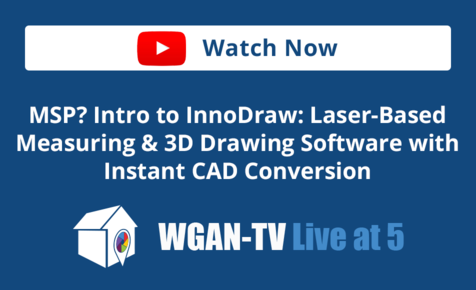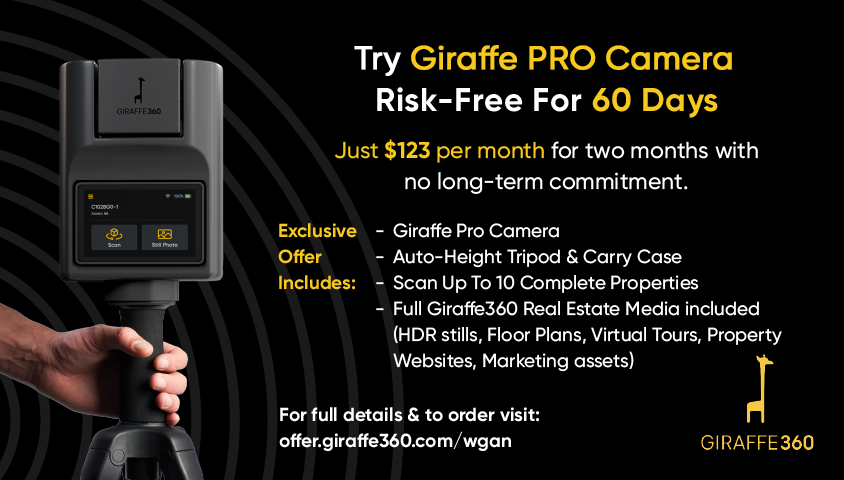Video: Field Test! Leica BLK360 (G1)and Matterport Pro2 3D Cameras17227
Pages:
1
 WGAN Forum WGAN ForumFounder & WGAN-TV Podcast Host Atlanta, Georgia |
DanSmigrod private msg quote post Address this user | |
| Video: Field Test! Leica BLK360 (G1)and Matterport Pro2 3D Cameras | Video courtesy of Hopscotch Interactive YouTube Channel | 2 August 2022 Transcript (Video above) [00:00:00] Emily Olman: Hi everybody. It's Emily from Hopscotch Interactive. Today I am out in the field scanning a huge warehouse space. This space is over 65,000 square feet. We are trying to understand the differences between scanning it with the Matterport Pro2 camera, which is now about $2,795, so just around $3,000 to get started with the Matterport Pro2 versus scanning with the Leica BLK, which is now actually a little bit more than it used to be, it's starting at over $19,000, so I think $19,077. They each have their benefits, they each have their pluses and minuses. What we really want to know is, how do they perform when you're dealing with a large warehouse, industrial or shell commercial space. Let's check it out. [00:00:53] Kevin: It's going to create that. [00:00:54] Emily Olman: It'll create that. [00:00:55] Kevin: Yes [00:00:55] Emily Olman: But it looks like we already have data underneath here, should we worry about that or should we just put it on top, and then not worry about filling that in? [00:01:04] Kevin: We could put it on the side or go into the options. [00:01:08] Emily Olman: Just a second. Commercial. Hit Options. [00:01:14] Kevin: I think they're different than the ones you have over there. One, you can select the HDR.... Let me use this table. I usually don't change HDR at least for the other job. [00:01:30] Emily Olman: Is three equivalent to neutral? Or is that just like the quality of the images with multiple stops. Those are stops at each turn, is that the idea is that there's three images, three brackets? [00:01:48] Kevin: I believe so. The HDR then there will be four stops. [00:01:50] Emily Olman: If you changed it, it would be four stops maybe. It would take less time theoretically. [00:01:58] Kevin: Theoretically, and what also changes time is whether you're doing a low, medium or high density, usually less than a minute, two minutes, four minutes. If it's a very wide rooftop, I generally do a longer, more intense scan. I can go and do something else while it stands. [00:02:14] Emily Olman: What do you recommend for this? [00:02:15] Kevin: Low is about three feet, with medium, I go about 10 feet. [00:02:20] Emily Olman: Yes. [00:02:20] Kevin: After I've scanned to the next spot, high density is probably at least 15 feet. That really depends. [00:02:30] Emily Olman: This looks to me, [00:02:35] Emily Olman: each of these I think represents, 12 feet. This is 12, 24, 36, 48, so that if we wanted to do 10 feet in each direction or 20 feet in each direction. [00:02:49] Kevin: I think like if we do three here and three here. But again, it depends if we're doing medium or high density. Let's start with medium. [00:02:58] Emily Olman: Start with medium? [00:02:59] Kevin: I may not low. [00:03:00] Emily Olman: Okay. [00:03:00] Kevin: I use medium generally for bigger spaces. Let's start with the medium. [00:03:04] Emily Olman: That sounds good. [00:03:05] Kevin: Is this the spot to start at. [00:03:08] Emily Olman: Right here is perfect, I think. Just a little bit back from the light, and that way we can see how it fills in the light. [00:03:15] Kevin: Perfect. [00:03:15] Emily Olman: Cool. [00:03:16] Kevin: Let's give it a try. Let's see, this is a good scan. [00:03:18] Emily Olman: It's totally fine. [00:03:19] Kevin: I think four would capture it, but if you want to bangle it up a bit more, maybe six would do their job. [00:03:25] Emily Olman: I think four is fine. [00:03:28] Kevin: Medium has a bigger span than the Matterport. [00:03:33] Emily Olman: Absolutely. I'm sorry, Kevin, we didn't keep your perfect aligned. [00:03:38] Kevin: No [inaudible 00:03:38] [00:03:38] Emily Olman: Look, these were perfectly aligned. He's worked so hard, he's gotten everything. Look at the geometry, anywhere like blop. [00:03:46] Kevin: But as long as it captures the space, doesn't need to be aligned. [00:03:48] Emily Olman: Exactly. It doesn't need to be aligned whatsoever. [00:03:52] Kevin: It's dropping here, a lot of it. [00:03:55] Emily Olman: Maybe we put it next to the window line next. [00:03:58] Kevin: How did you do the light, it did the light really well. This window line is I think that one. [00:04:05] Emily Olman: You're right. I'm looking at this all long. [00:04:07] Kevin: This is our server here. [00:04:10] Emily Olman: In a way it's a shortcut, but in a way it's not a shortcut because if you had just spent this whole time doing another 6-10 scans in the area, you would have filled it in any way. You may have had to have done a cortex conversion. But in this situation, we've added the BLK. We have fewer scan points. They take longer per scan based on the density. If you've chosen low, medium, or high density, it's up to four minutes per scan. Also probably depending on however many HDR brackets you select. Then that's just going to basically fill in these larger areas. It's more sparse, so the points are more sparse. But because we have this more robust camera, we're filling in a little bit more data and we need less scans. I wonder if it's truly a time savings, it must be enlarged obviously for large open areas. But I think it's really interesting to see what coverage we get here, where we don't have this spray, and where the black dots are, that's where it didn't collect data. It actually removed data from underneath. Anywhere we have this hexagon, the Matterport major patch, then this data will show up as empty in the 3D in the doll house view. Here. Interestingly, it's not really a hexagon. [00:05:43] Kevin: It's more of a circle, closer to a circle. [00:05:47] Emily Olman: Closer to a circle. But it does fill in a much larger range. Interesting stuff, and it won't have any problem with the sun because it's the LIDAR. [00:06:02] Kevin: Super cool. I believe so. You could use either the Matterport or the BLK and put it in close enough that's covered with the circle. [00:06:13] Emily Olman: Exactly. That's the part that we're missing is that underneath and that's again, if you're just being really particular about it, it looks like a partial eclipse, but it is. All right guys, so this has been an awesome day. We have had a lot of fun. We had already done a large percentage of this property with the Matterport Pro2. I would say we had probably done about 80- 90 percent, and we were going to try to fill in the gaps with our Leica BLK. What we learned is that the Leica BLK can really help us fill in those areas where we have a large space to overcome. We set it at the low medium and the high density, which means up to four minutes per scan at that high density. At medium density we were able to actually fill in just maybe three scans with the Leica BLK, and really make our whole model come together that much more quickly and save some time. Then when we added in the Matterport Pro2, that meant we could get those detailed shots. We can fill in some of that mesh. Actually working together, the cameras compliment each other a lot, and that was a huge surprise. If you're interested in more Leica BLK, or you're interested in more Matterport Pro2, let us know, check it out in the comments, tell us what you think and we'd love to hear more. We're definitely going to run some more experiments. But I think today was a huge success. Don't forget to like and subscribe, and to let us know what you think. Thanks so much for watching. |
||
| Post 1 • IP flag post | ||
Pages:
1This topic is archived. Start new topic?

















